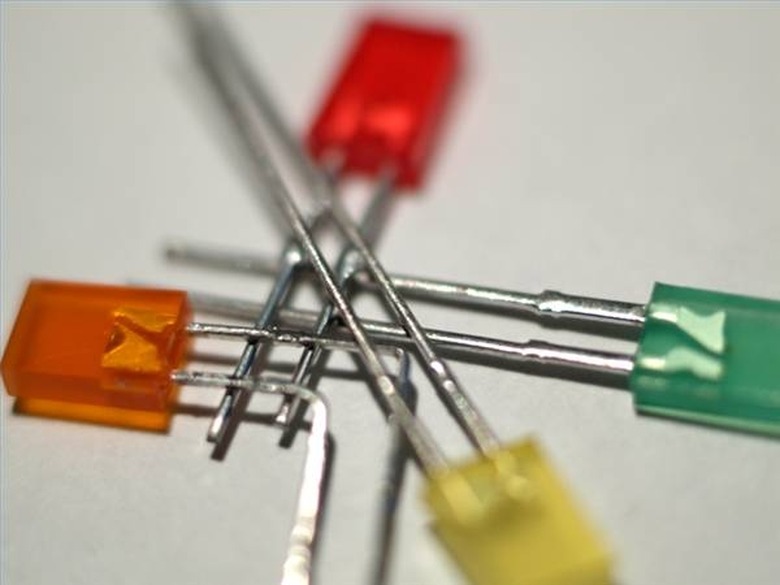Powering an LED is not as easy as simply hooking it up to a battery. An LED has almost no internal resistance. Therefore, if you hook it up directly to a battery, it will burn out quickly as the current flows unimpeded through the LED. You must add a resistor to the LED circuit. This tutorial explains how to calculate the resistance needed.
Step 1
In order to calculate the resistance needed, Ohm’s Law is used. Ohm’s Law can be stated as V = I x R, where V is voltage, I is current and R is resistance. Since we are calculating resistance, we can rearrange the formula to read R = V ÷ I.
Step 2
Plug the values you have into the formula. Performing the calculation will give you the value of the necessary resistor.
Step 3
For example, suppose you have a 12 V supply, a white LED with a forward voltage of 3.4 V, and a current of 20 milliamps (0.020 amps.) First calculate the voltage by subtracting 3.4 from 12, giving 8.6.
Step 4
Now calculate the following: R = 8.6 ÷ 0.020, or 430 Ω (ohms.)
Things Needed
- The voltage of the battery to which you are connecting the LED
- The current to be passed through the LED
- The forward voltage of the LED (found on the LED’s data sheet)
TL;DR (Too Long; Didn’t Read)
If you are connecting LEDs in series, simply add the forward voltages together before subtracting from the supply voltage.

